Demo page 7: Differentiation Plasmodium
| P. Falciparum | P. Vivax | P. Ovale | P. Malariae | P. Knowlesi |
| size infected RBC | normal | normal to enlarged (up to 1 1/2× to 2×) |
normal or slightly enlarged (up to 1 1/4×) round to oval sometimes fimbriated |
normal or smaller than normal (3/4×) |
normal |
| ring/trophozoite stage | 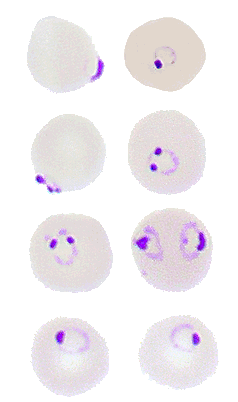 |
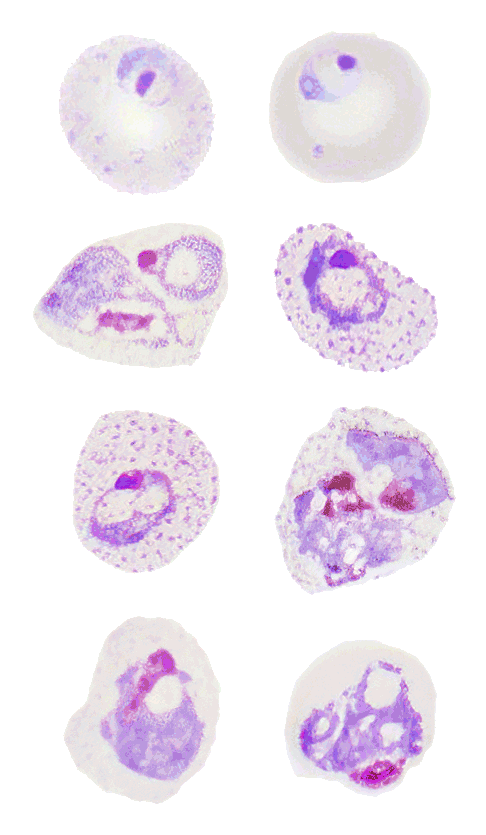 |
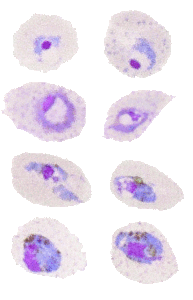 |
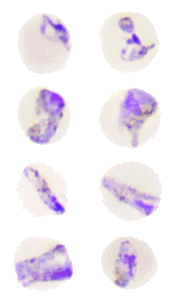 |
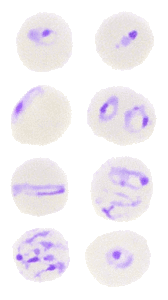 |
| – ring forms <1/3 of RBC – multiply-infected RBCs – classic “head phone” form – appliqué/accolé forms |
– ameboid ring form – Schüffner’s dots – multiply-infected RBCs |
– compact trophozoites – coarse Schüffner’s dots |
– band-form trophozoites -“basket-form” trophozoites – often coarse chromatin dot |
– 1/3 to 1/2 of the RBC – band-form trophozoites – multiply-infected RBCs – slightly amoeboid and irregular – appliqué forms (sometimes) – fine dark brown pigment |
| schizonts | 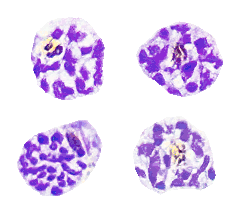 |
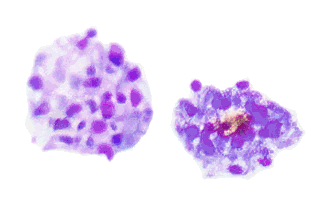 |
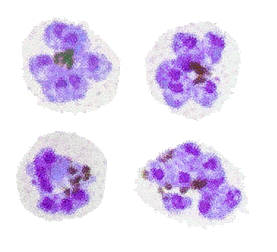 |
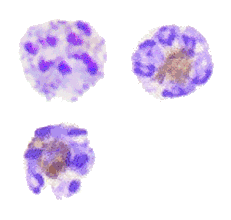 |
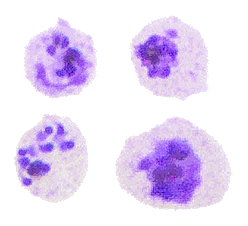 |
| – seldom seen in PB – 8 to 24 small merozoites – dark clumped pigment |
– 12 to 24 merozoites – yellowish-brown coagulated pigment |
– 6 to 14 merozoites – large nuclei – mass of dark-brown pigment |
– 6 to 12 merozoites – sometimes “rosette” appearance – coarse, dark-brown pigment |
– maximum of 16 merozoites – pigment in many small granules or clumps of brownish black round mass |
| gametocytes | 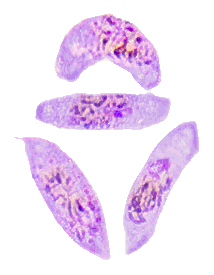 |
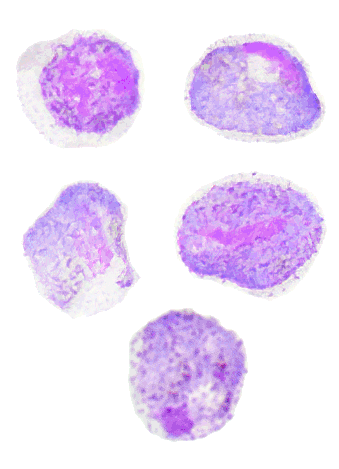 |
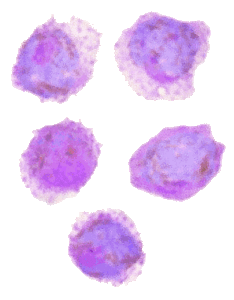 |
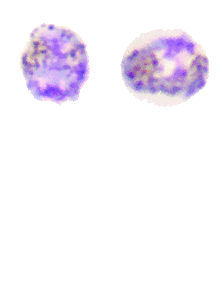 |
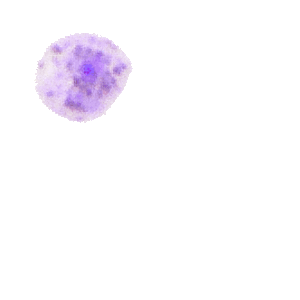 |
| – crescent or sausage shaped – diffuse, scattered pigment |
– enlarged RBC – scattered pigment – large nucleus |
– macrogametocyt course pigment – microgametocyt diffuse pigment – discrete red nucleus – Schüffner’s dots |
– compact, fills RBC – scattered brown pigment |
– compact chromatin – irregularly distributed pigment grains |